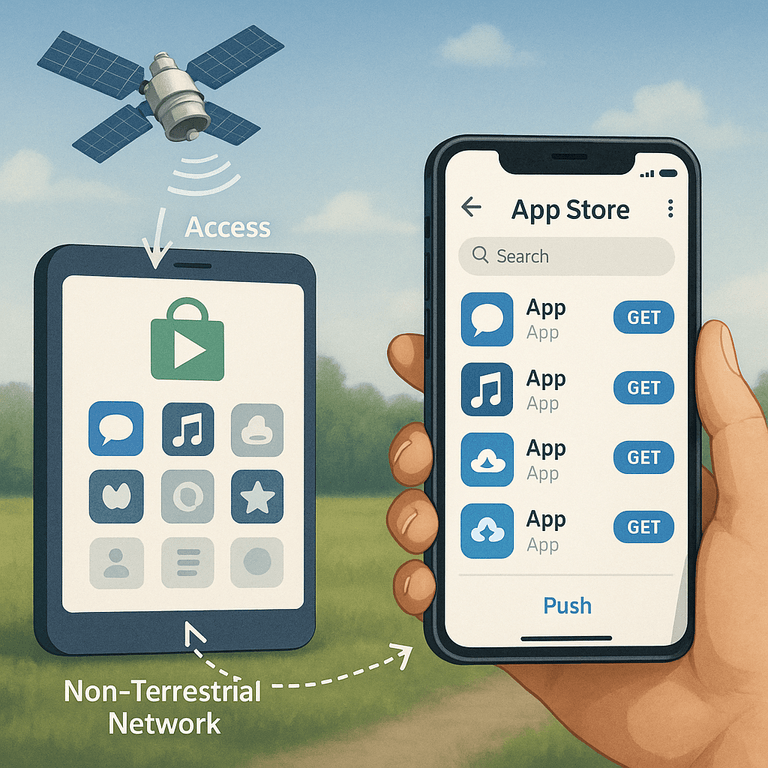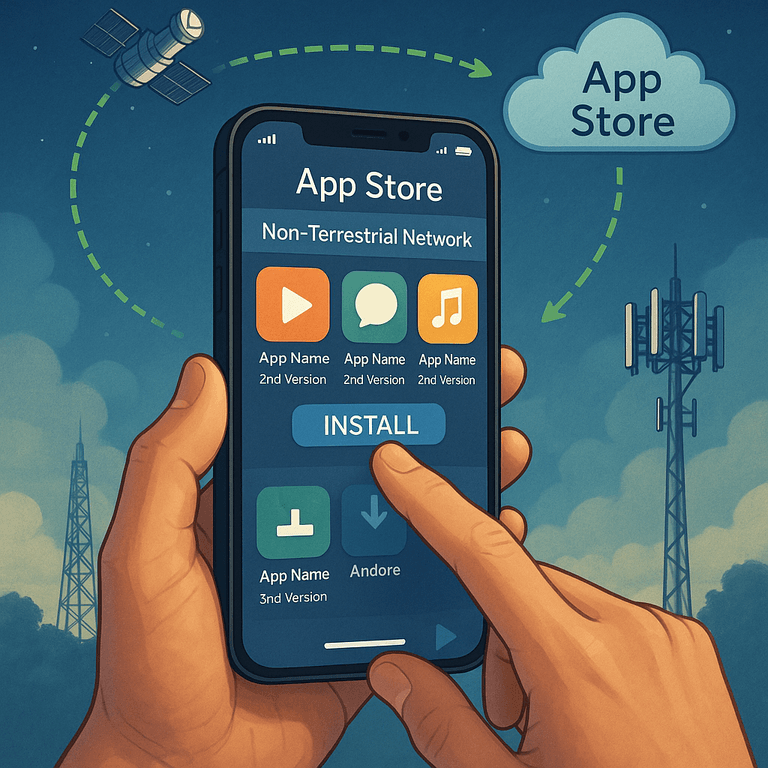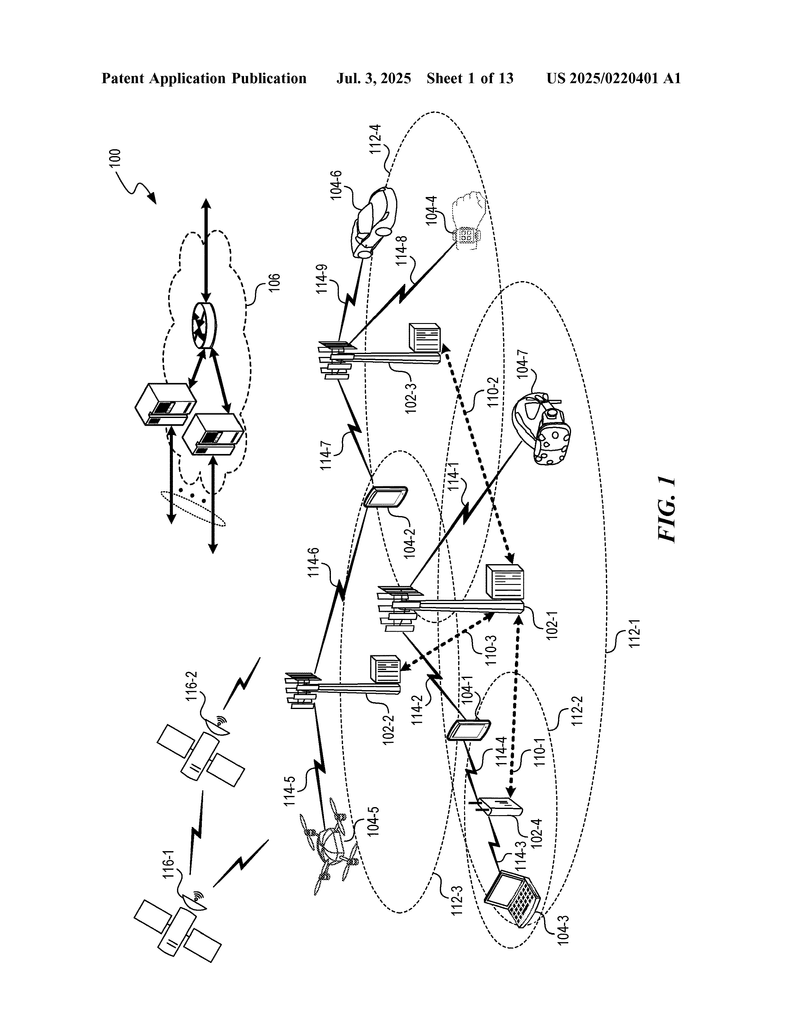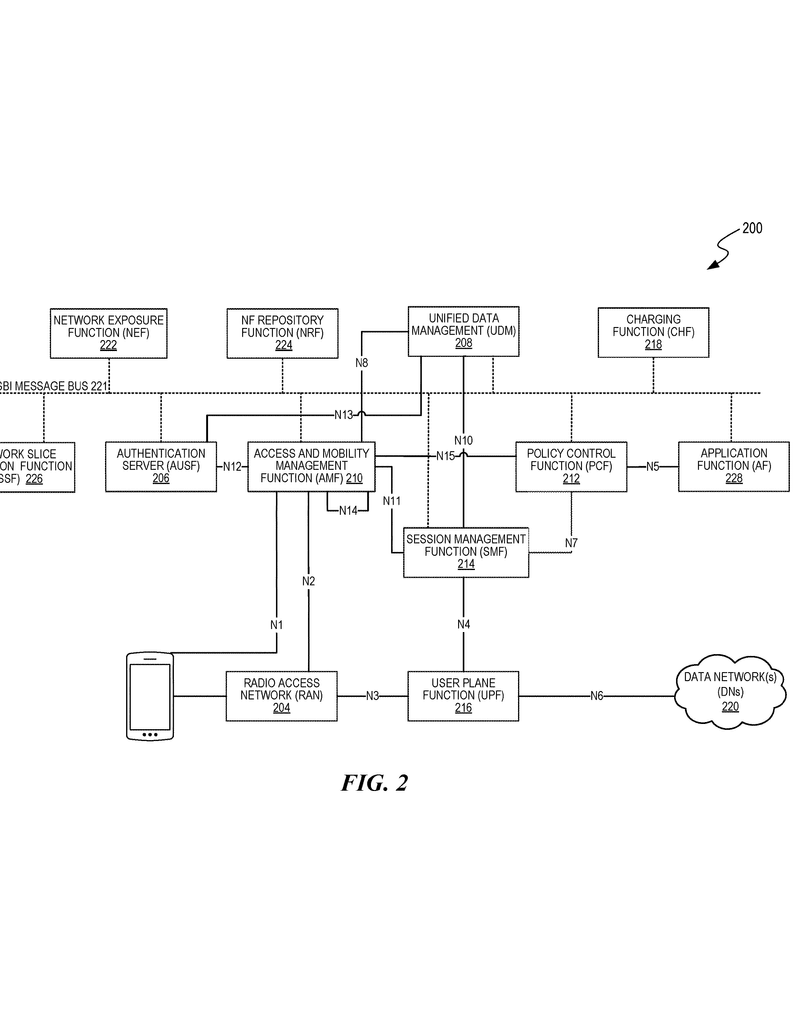Invented by Ives; Derrick L., Dreiling; Ryan P., Lucht; Thomas P., Wang; Helen, Lundahl; Michele, Shah; Mehul, Siddique; Zaheer Mohammed
Let’s explore a new patent about mobile app stores that change how apps work depending on whether a device is using a regular ground-based network or a satellite network. This technology helps devices use less data and energy when connected through satellites, which are often slower and more expensive than regular networks. In this article, we’ll break down how this works, why it matters, and what’s new about it.
Background and Market Context
We rely on our phones and tablets every day to run apps, send messages, watch videos, and do much more. Usually, these devices connect to the internet using networks built on the ground, like 4G or 5G towers. These networks cover cities, towns, and highways, but there are still places where it is hard to get a good signal—like mountains, deserts, remote villages, or even out in the ocean. That’s where satellites come in.
Satellites can beam down signals to cover huge areas. They can reach places where towers can’t be built. With new mobile standards like 6G, companies want to make it easy for phones to switch between ground-based networks and satellites, depending on what’s available. This switch is important for people who travel a lot, live far from cities, or work in places where regular networks don’t reach.
But there’s a catch. Satellite networks can’t handle as much data as ground networks. They are often slower, have higher delays, and cost more to use. If every phone tried to use as much data over satellites as it does over 5G, the network would get overloaded and the bills would pile up. Also, satellites and the devices themselves use more energy to connect, which leads to more power use and more emissions.
Phone makers and network providers need a way to help devices use the right amount of data, depending on the network. They also want to let people know when their device is using a satellite, so they can change how they use their apps. This new patent solves these problems by changing how app stores work and how apps are delivered to devices.
With this technology, the app store can tell what kind of network the device is using. If the device is connected to a satellite, the app store only shows special versions of apps that use less data and energy. When the device returns to a regular network, the app store can offer the full versions again. This makes sure people get the best experience without overloading the network or their devices.
This is especially helpful for people who depend on messaging and basic communication in emergency situations or in far-off places. It also helps protect the environment by reducing energy use and carbon emissions from both satellites and data centers. As more people use mobile devices and as satellite networks become more common, this kind of technology will be more and more important.
Scientific Rationale and Prior Art
To understand the science behind this patent, let’s look at how different networks work and what problems they have.
Ground-based networks, like 4G and 5G, use towers and antennas to send signals to your phone. These networks have a lot of bandwidth, which means they can carry a lot of data at once. People can watch high-quality videos, play games, and send big files without trouble. The signal is strong and the delays are low.
Satellite networks, on the other hand, work by sending signals up to satellites in space and then down to your device. These signals travel a long way, so there’s more delay (called latency). The amount of data a satellite can handle is limited, and so is the number of devices it can serve at one time. Trying to use data-heavy apps, like 4K video streaming, over a satellite can slow down the network for everyone and can even make some services unusable.
In the past, devices would simply try to use the same apps and the same settings no matter which network they were on. This could cause problems. For example, if you tried to use a video call app over a satellite, the quality would drop or the call might fail. If your phone tried to download big updates or stream music without limits, it would slow down the whole network, use a lot of battery, and even cost more money.
Some companies tried to fix this by letting users manually turn off certain features when on slow networks, or by having apps that could detect the network speed and change their quality. But these solutions were not automatic and didn’t always work well. App stores would show all available apps, even the ones that wouldn’t work well over a satellite. Users would have to figure out on their own which ones to use or avoid.
There have also been methods where a device could disable some features or restrict background data when it detected a slow network. But these solutions worked at the device level, not at the app store or app version level. There was no system where the app store itself would show different versions of apps based on the network.
This patent builds on these ideas. It connects the app store to the network type. When the device is on a satellite network, the app store only shows versions of apps that are designed to work under those restrictions. Features that use a lot of data are disabled. Messages, alerts, and even the look of the app can change to make it clear which version is running. When the device switches back to a regular network, the app store can recommend or automatically provide the full-featured versions again.
No other system before has made the app store itself so aware of the network type and able to control what versions of apps a user can see or install. This makes it much easier for users and network providers. It also helps save energy, reduce data overload, and protect the environment. The patent describes ways to bundle both versions together, so switching is smooth and the user experience is not interrupted.
This approach is different because it combines network detection, app version control, and app store management in one system. It goes beyond just adjusting settings or limiting features on the device—it changes which apps are shown, which can be installed, and how they work, all based on the network in use.
Invention Description and Key Innovations
Let’s look at how the invention works in practice, step by step, and what makes it special.
When you open the app store on your phone or tablet, the app store checks what kind of network you’re using. It does this by getting information from the network—like special codes or other signals that tell it whether you’re on a regular network or a satellite. If you’re on a regular network, you see all the usual apps and can download or update them as normal.
If you’re on a satellite network, the app store changes how it works. It only shows you special versions of the apps that are made to use less data and work better over slower, high-latency connections. These versions might have some features turned off. For example, a messaging app might only allow plain text messages, not photos or videos. A streaming app might only let you stream in low quality or just audio, not high-definition video.
When you pick an app to download, the app store sends the right version for the network you’re on. If you later move back to a regular network, the app store can alert you that a full-featured version is available and offer to download it. These versions can be bundled together, so your device can switch between them without you having to do anything.
The app store also changes the look or feel of the app versions, so you know which one you’re using. The colors, icons, or text might be different. This makes it clear that you’re on a limited version and helps you avoid trying to use features that won’t work well.
The system can also adjust app features in real time. If the satellite connection gets worse, the app can turn off even more features or lower the quality further. If the connection improves, some features might come back. This keeps your device running smoothly and avoids overloading the network.
Another key part of the invention is that it can save energy and help the environment. By using less data and turning off data-heavy features, your device uses less battery and the satellite uses less power to transmit data. Because data centers also use less energy to store and move less data, the whole system uses less electricity and produces less carbon pollution.
The system can also make it easier for network providers to manage resources. For example, they can choose which features or services to allow on satellite networks and update the app store and device settings remotely. They can even set rules to control which apps are available, depending on the time of day or the amount of traffic on the network.
The technology has other benefits, too. It can help people in emergencies by making sure basic communication apps always work, even if other features are turned off. It can also let users know when they are using a more expensive or slower network, so they can adjust their usage or avoid extra charges.
Overall, this invention brings together network detection, app version control, app store management, and environmental awareness into one seamless system. It gives users a better experience, helps network providers manage their resources, and protects the environment by saving energy and reducing emissions.
Conclusion
This patent introduces a smart way for app stores and mobile devices to handle the differences between ground-based and satellite networks. By showing and delivering the right versions of apps for each network type, it helps users avoid slowdowns, saves energy, and protects the environment. It builds on past ideas but goes further by making the app store itself aware of the network and able to control what users see and install. As more of the world goes online, especially in remote places, this kind of technology will be key to making sure everyone gets the best experience, no matter where they are or how they connect.
Click here https://ppubs.uspto.gov/pubwebapp/ and search 20250220401.




